Iron Mountain Dwarves
No one knows where the dwarves came from or how they came to be.
One thing is certain: when the dwarves arrived, they brought order and structure to the world.
One thing is certain: when the dwarves arrived, they brought order and structure to the world.
The Anvil Creation Myth
The dwarves were created by the god of the forge, who crafted them on a massive anvil made from the bones of a dragon. The dwarves were imbued with the strength of the dragon and tasked with using their powers for the betterment of all peoples. The anvil was seen as a sacred symbol of the dwarves' connection to their creator and their duty to uphold his values.
The Mountain Creation Myth
The dwarves were born from the heart of the mountains, emerging fully formed and ready to begin their lives as miners and builders. The mountains were seen as their mother and father, and the dwarves saw it as their duty to protect and care for the land they called home. All dwarves across Reverium were born of the mountains somewhere down their family line.
The Crystal Creation Myth
The dwarves were created by the power of the crystals themselves. The crystals, which were said to contain the essence of magic, formed the dwarves from the pressure of the mountains and gave them their innate understanding of how to work with the precious stones. The dwarves were seen as the chosen guardians of the crystals, entrusted with their safekeeping.
Behold, the dwarves! They are renowned for their unparalleled skill in the art of crafting and their ability to manipulate the stubbornness of metal and the solidity of stone to their advantage. Their mighty hands have built grandiose structures in the depths of the mountains, painstakingly carving out complex tunnels and halls from the unyielding rock. The citadels of their people stand as architectural marvels, boasting intricate networks of underground aqueducts, ventilation systems, and other marvels of technology. But their prowess in metalworking is the most awe-inspiring of all; for they have forged weapons and tools of exceptional quality, and their deft fingers have woven intricate patterns in ornate suits of armor and exquisite jewelry, often embellished with gems and crystals of great value, mined deep from the very heart of the mountains.
Through many trials and tribulations, the stalwart dwarves were able to uncover a startling revelation: the precious crystals they had so long prized possessed an incredible capacity to produce electric power through application of force or resonance. This revelation would herald a new age of technological innovation for the dwarven people, as they swiftly set about forging a plethora of new machines and devices, all fueled by the enigmatic crystals. Presently, the dwarves reign supreme in the fields of clockwork and shocktech. Entire cities are powered by the crystals, which are diligently mined from the deep recesses of the mountains and transformed into complex apparatuses that drive the dwarven economy to new heights.
As the great dwarven civilization flourished, our people sought to expand their knowledge beyond the traditional paths of stone and metal. It was through their insatiable thirst for discovery that they stumbled upon a gift from the mountains that would change our society forever. The shockstone crystals. At first, the shockstones were nothing more than a curiosity. Their unusual appearance and mysterious properties piqued the interest of our most learned scholars, and soon they were the subject of intense study. For years, our people poured over the crystals, seeking to unlock the secrets hidden within.
Through many trials and tribulations, the stalwart dwarves were able to uncover a startling revelation: the precious crystals they had so long prized possessed an incredible capacity to produce electric power through application of force or resonance. This revelation would herald a new age of technological innovation for the dwarven people, as they swiftly set about forging a plethora of new machines and devices, all fueled by the enigmatic crystals. Presently, the dwarves reign supreme in the fields of clockwork and shocktech. Entire cities are powered by the crystals, which are diligently mined from the deep recesses of the mountains and transformed into complex apparatuses that drive the dwarven economy to new heights.
From Forge to Crystal Clockwork
Early days
-4000The dwarves first establish their civilization in the mountains, relying on traditional methods of mining and forging to create their tools and weapons. They become known throughout the land for their skill at the forge, producing weapons and armor of unparalleled quality.
Discovery of the crystals
-3130While mining deep in the mountains, a group of dwarves discover a vein of shimmering crystals unlike any they have seen before. These crystals are later named "shockstones" for the electric charge they can generate when struck or put under pressure.
Early experimentation
-3410Intrigued by the properties of the shockstones, the dwarves begin experimenting with different ways to harness their power. They try embedding them in metal tools, creating crude batteries by stacking them together, and even using them in simple devices like sensors and light sources. Gnomes from the south introduce clockwork power to the dwarves.
Advancements in Clockwork
-2270The dwarves continue to perfect their clockwork mechanisms, incorporating gears, springs, and other components into increasingly complex machines. They begin to see the potential for combining these clockwork devices with the shockstones to create more powerful and efficient machinery.
The Rise of Shocktech
-1520As the dwarves' understanding of shocktech grows, they develop new ways to harness this energy source. They begin using specially designed shockstones in their clockwork devices, creating machines that can operate for longer periods of time without needing to be wound up or recharged. They also develop new methods for mining and refining the crystals, allowing them to extract more energy from each stone.
The Age of Shocktech
-1000With their mastery of shocktech and clockwork, the dwarves enter a new era of technology. They begin to power entire cities using large-scale shockstone generators, which convert the mechanical energy of moving objects into electrical energy. They also create new machinery, such as crystal-powered elevators and automated factories. The shockstones become a valuable commodity, with skilled miners and crystal-cutters commanding high prices for their services.
Continued innovation
1000+As time passes, the dwarves continue to push the boundaries of clockwork and shocktech. They experiment with new types of shockstones, discovering that different varieties can generate different types of electrical energy. They create crystal-powered airships, trains, and other forms of transportation, revolutionizing the way people travel.
- Batteries
- Automatons
- Instruments
- Communication
- Weaponry
- Mining
Key History
Dwarven Appearance
-4000
The dwarves are first recorded living within the Iron Mountains.Dwarven Retreat
-3100
The dwarves of the Iron Mountains retreat into their mountains.Cog and Crystal Concord
-2600
The dwarves and gnomes join forces to advance technology.Dwarven Resurgence
-1450
The dwarves of the Iron Mountains begin to reclaim their power.Society and Culture
Social Classes and Hierarchy
In dwarven society, the worth of an individual is not measured by their wealth or station but by their skills and talents. The dwarves highly value those who possess the craftsmanship, mining, and engineering skills necessary to maintain their society. These skilled individuals are held in high regard and are respected by all members of the community. Not all dwarves are equally skilled, and those who lack these coveted abilities may find themselves in a lower social standing. Although they are still valued members of the community and play important roles in dwarven society, they may not receive the same level of honor and respect as their more skilled counterparts. Nevertheless, every member of dwarven society has their own unique role to play, and each is important in their own way.Iron Mountain Inhabitants
The relationship between the dwarves and the mountain gnomes is one of mutual dependence and respect. While the dwarves are skilled in crafting massive clockwork machines, they lack the finesse required for the intricate and delicate clockwork mechanisms that the gnomes specialize in. On the other hand, the gnomes' small stature and limited resources mean they are unable to construct the larger clockwork devices that the dwarves can.
As a result, the two groups have learned to work together to create clockwork technology that is both intricate and large-scale. The dwarves provide the gnomes with the resources and materials they need to create their delicate clockwork mechanisms, while the gnomes provide the dwarves with the expertise needed to create intricate clockwork designs.
This partnership extends beyond clockwork technology and into other areas as well, such as mining and shockstone harvesting. The gnomes possess a deep knowledge of the mountain's mineral resources, and the dwarves rely on their expertise to find the best deposits. In turn, the dwarves provide the gnomes with protection and resources, ensuring their safety and enabling them to focus on their work.
Despite their close relationship, conflicts do arise between the dwarves and gnomes from time to time, often due to misunderstandings or disagreements over resource allocation. However, these conflicts are typically resolved through negotiation and compromise, as both groups recognize the value of their partnership and the benefits it brings to both of their societies.
The dwarves and gnomes' relationship has led to incredible new inventions, from intricate clockwork automatons to powerful mining machines. These inventions have helped to power their society and allow them to delve deeper into the mountains and uncover new resources.
To outsiders, the dwarves and gnomes' relationship may seem unusual or even mysterious, but to those who live in the mountains, it is simply a way of life. Their partnership has allowed them to thrive in a harsh and unforgiving environment, and has given them the tools they need to create a prosperous and successful society.Political Organization and Leadership
Of all the races inhabiting the land, the dwarves are known for their strong family bonds and communal values. The foundation of their political structure is a complex system of clan leadership, with each clan having its own leader.
Leadership Structure
Dwarven leadership follows a hierarchical structure, with each clan having its own leader. These leaders are selected based on their expertise, experience, and skill and are entrusted with the responsibility of making important decisions for their respective clans. These could include decisions relating to trade, defense, or mining activities. There are also councils of clan leaders who come together to make decisions that affect the entire dwarven community. These councils are made up of the most experienced and respected leaders.
Decision-Making Processes
The decision-making processes of the dwarves follow a consensus-building model. Dwarven leaders are expected to be fair, just, and wise, and always have the best interests of their clan and community at heart. When an important decision needs to be made, the clan leader consults with their advisors and seeks input from members of their clan. They may also reach out to other clan leaders or members of the council for advice. Once all relevant parties have been consulted, the leader makes a decision that they believe is in the best interests of their clan and community.
Role of Clans
In the realm of dwarves, clans are not just a matter of blood ties but an unbreakable bond that unites its members under a common purpose. Dwarves are born into their clans and from there they learn to work together towards the betterment of the entire clan. Each clan has its own leader, whose authority is respected and unquestioned. The leader's word is law and they are responsible for making all major decisions concerning the clan's affairs. Clans are usually made up of extended families who live and work together, sharing a common heritage and culture. From mining and crafting to trade and defense, each clan has its own specialties and strengths. Dwarves are not solely interested in their clan's well-being but are also mindful of the broader dwarven community. They know that their actions reflect not only on their clan but on all dwarves, and they take great pride in representing their people with honor and dignity. Being a member of a clan is a matter of pride for dwarves and many go to great lengths to distinguish themselves within their clan. Some may seek to become the leader of their clan or to be recognized as a master craftsman. Dwarves take their clan affiliations seriously and any insult to their clan is considered an insult to their honor. Thus, dwarves will defend their clan's reputation fiercely and are not afraid to take up arms to protect their kin.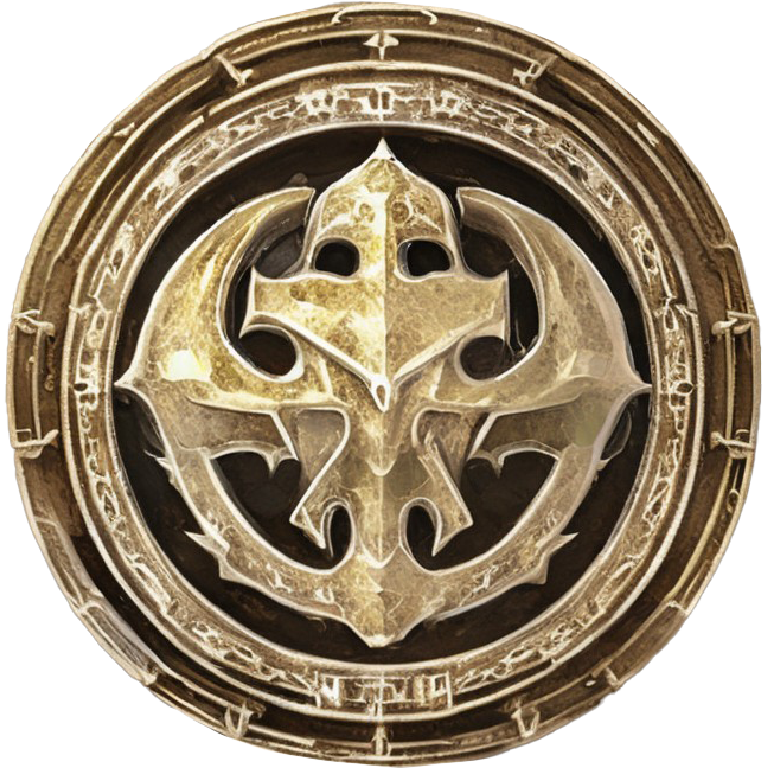
Stonehammer Clan
The Stonehammer Clan is known for their impressive strength and skill in mining. They are one of the most prosperous clans due to their vast reserves of precious metals and gemstones. The clan is highly respected among the dwarven community for their dedication to their craft. They are led by Throgar Stonehammer, who is revered for his compassion.
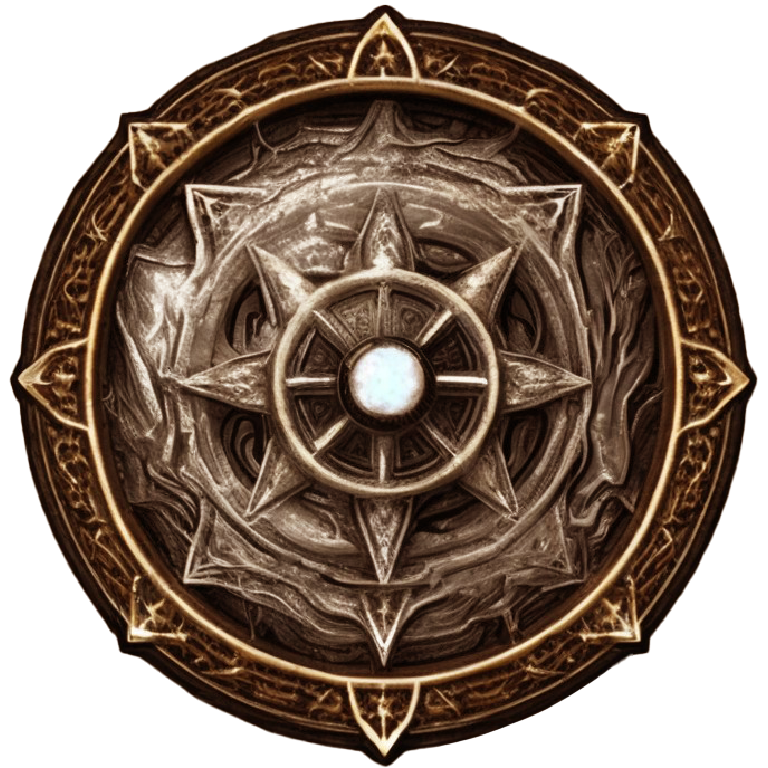
Thunderstone Clan
The Thunderstone Clan is renowned for their expertise in crafting weapons and armor. They are the go-to clan for anyone seeking quality weaponry and their products are sought after throughout the kingdoms. The Thunderstone Clan is led by Balin Thunderstone, a skilled blacksmith who is regarded as one of the greatest weaponsmiths alive.
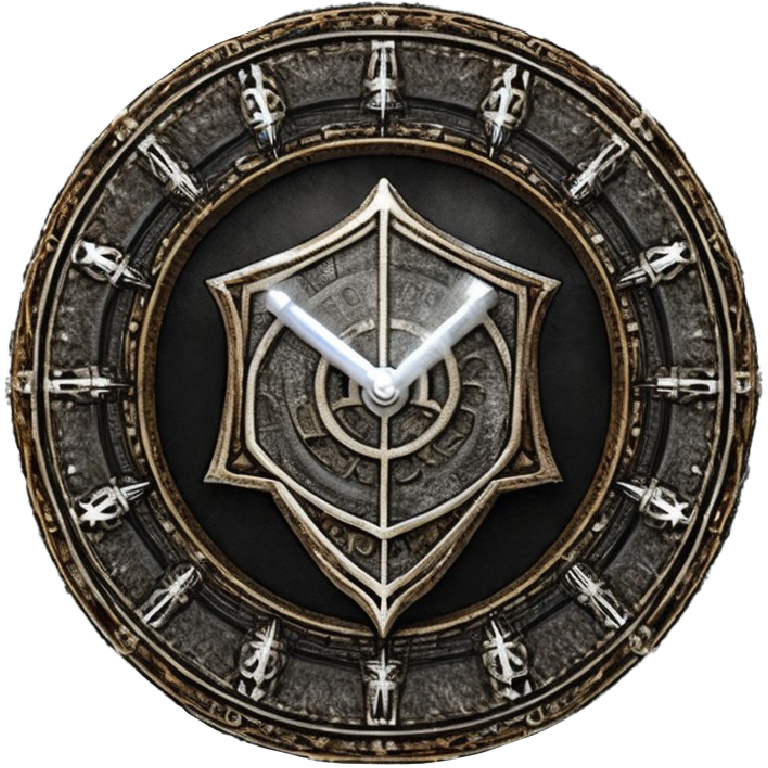
Blazeforge Clan
The Blazeforge Clan is known for their exceptional craftsmanship in building and engineering. They are responsible for many of the highly intricate clockwork structures in the dwarven kingdoms, including grand halls, bridges, and aqueducts. The Blazeforge Clan is led by Keldar Blazeforge; wise, respected, and thought to be a genius clockwork architect.
Cultural Practices and Traditions
Dwarven culture is deeply rooted in their love of craftsmanship and their connection to the mountain. They celebrate their craft and skill with festivals and competitions, and often hold feasts and gatherings to share their work and trade stories. They also have a strong sense of community and kinship, and value loyalty and solidarity among their clan members."Don't lose your spring."
Be positive and don't give up or become discouraged.
Be positive and don't give up or become discouraged.
"One gear at a time."
Take things step by step and don't rush the process.
Take things step by step and don't rush the process.
"Don't cross timing belts."
Stay out of someone else's
business or affairs.
Stay out of someone else's
business or affairs.
Before entering a mine, dwarves make an offering of food or drink to the mountain, asking for its protection and guidance.
When mining a particularly rich vein of crystal, dwarves leave a small portion untouched as an offering to the gods.
If a crystal breaks or shatters, it is a sign of impending doom or bad luck and should be discarded.
Dwarves carve figurines or talismans out of shockstones, which they wear as protection against bad luck.
It is considered bad luck to enter a mine on certain days of the year, such as the anniversary of a mining disaster.
Art and Craftsmanship
Dwarven art and craftsmanship is highly valued and respected, with a long history of creating beautiful and intricate objects. They are known for their skill in metalworking, gem-cutting, and now crystal-based clockwork devices. Their art and craftsmanship may be highly ornate and decorative, featuring intricate patterns and designs, or it may be more functional, designed for use in everyday life. Whatever the form, dwarven art and craftsmanship is highly regarded and prized for its quality and beauty.
Dwarves take great pride in their homes and use their crafting abilities to create beautiful and functional living spaces. Inside, the homes are adorned with intricate carvings and decorations, with every detail carefully crafted by skilled dwarven artisans. The result is a stunning display of dwarven craftsmanship, creating homes that are beautiful works of art.
While the dwarves appreciated the beauty of natural materials such as gems and metals, they did not place the same value on other art forms. It's rare to find dwarven paintings, although some dwarves have been known to take up brushes and pigment to craft decorative pieces for their homes, offering commissions for other dwarves and those seeking their rare art.
Relationship with the Outside World
Alliances of the Dwarves
Dragonfolk
Dragonfolk are powerful and ancient creatures, and their wisdom and strength make them formidable allies. While dwarves and dragonfolk have had conflicts in the past, they come together to face common threats, such as an invasion from a rival kingdom.Elves
While the elves and dwarves have a complicated history, they share a love of nature and a deep respect for craftsmanship. In times of mutual threat, the dwarves and elves will always put their differences aside to form a powerful alliance against the enemy.Perception by Outsiders
The Iron Mountain Dwarves are known throughout the region for their expertise in crafting and engineering, as well as their natural affinity for shocktech. Due to their isolationist tendencies, they are mistakenly perceived as secretive and aloof by outsiders.Curious what each kingdom's general viewpoint is of the Iron Mountain Dwarves? Click your kingdom below!
The Burning Sands
While the Burning Sands are not known for their trade or alliances with outsiders, those who have had dealings with the iron mountain dwarves see them as shrewd and savvy traders. The dwarves' expertise in crafting and engineering is also respected by those who live in this land of magic and mystery.
The Crystal Desert
The cerosi of the Crystal Desert are fascinated by the iron mountain dwarves' use of shockstones in their crafting. They see the dwarves as fellow experts in the field of magical engineering, and there is a growing interest in collaboration between the two societies.
Eldenroot
The half-elves of Eldenroot generally have a positive view of the iron mountain dwarves due to their shared reverence for nature and craftsmanship. They often trade with the dwarves for wood and other resources, and sometimes collaborate on projects to create beautiful and functional items.
The Emerald Isles
The elven people of the Emerald Isles have a longstanding friendship with the iron mountain dwarves, which dates back to a time when they collaborated on building a fleet of ships to travel the seas. The dwarves are respected for their technical expertise and ingenuity, and the elves often trade with them for finely crafted goods.
Evergreen
The druids who govern Evergreen view the iron mountain dwarves with a mix of admiration and caution. They appreciate the dwarves' skill in working with natural materials and crafting useful tools, but they also fear that the dwarves' mining operations could damage the delicate ecosystem of the forest.
The Frostlands
The people of the Frostlands view the iron mountain dwarves with a mixture of suspicion and respect. They recognize the dwarves' resilience and hardiness in the face of a harsh environment, but they also see them as outsiders using and improving dangerous magic.
The Shadowed Glades
The Shadowed Glades has a long history of conflict with the Iron Mountain Dwarves. The dwarves' mining and excavation of precious minerals and metals have often encroached upon the forest, leading to clashes with the coven of hags who rule the land with their dark magic. The hags have used their powers to protect the forest from the dwarves, leading to a tense relationship between the two societies.
Significant Conflicts
The Battle of the Black Hills
Forest Orcs from the Shadowed Glades, led by the warlord Graamsh, attacked the Iron Mountain Dwarves in an attempt to take control of the mines. The dwarves were able to repel the initial attack but the orcs continued to mount assaults over the course of several years. The conflict came to a head in the Battle of the Black Hills, where the dwarves and orcs fought a brutal battle. In the end, the dwarves emerged victorious with significant losses. There is still tension between the two groups, kept at ease by the Hags of The Shadowed Glades.The Siege of The Quarry
A human army led by a power-hungry king sought to expand their territory by taking control of the Iron Mountain Dwarves' mines. The dwarves refused to submit to the humans' demands and the humans responded by laying siege to the dwarves' quarries. The dwarves, known for their skilled engineering and fortifications, were able to hold off the human army for several months, but were eventually forced to surrender when their food and water supplies ran low. The dwarves were allowed to keep their mines, but had to pay a heavy tribute to the human king.The Great Trade Dispute
The Iron Mountain Dwarves have had conflicts with neighboring human kingdoms over trade routes and tariffs. The dwarves, who are renowned for their metalworking and crafting skills, have long been major players in the regional trade networks. However, as human kingdoms have grown in power and influence, they have sought to exert more control over trade and to impose tariffs on dwarven goods. The dwarves have resisted these attempts to limit their economic power, arguing that they have a right to fair trade and access to markets.Trade with the Dwarves
Iron Mountain Dwarves are renowned for their mining expertise and their ability to extract valuable resources from the mountains. But it is their shrewd trading practices that have earned them a place of prominence in the fantasy world.
Trade Practices
Iron Mountain Dwarves are skilled traders who use their mining expertise to extract valuable resources from the mountains and then exchange them for goods and services from neighboring kingdoms and factions. They are known for their hard bargaining and their meticulous attention to detail, which ensures that they get the best possible value for their goods.Weapons and armor: Iron Mountain Dwarves are skilled in the production of weapons and armor, which are in great demand among neighboring kingdoms and factions. Their weapons and armor are known for their durability.
Precious metals and gemstones: Iron Mountain Dwarves mine precious metals and gemstones from the mountains, including gold, silver, diamonds, and rubies. These resources are highly valued and are often used as currency in the fantasy world.
Crafted goods: Iron Mountain Dwarves are skilled craftsmen who produce a wide range of crafted goods, including furniture, pottery, and jewelry. These goods are highly valued and are often traded for other goods and services.
Craft Specialties
Each clan of Iron Mountain Dwarves specializes in a particular trade or craft, which helps to ensure that the needs of all dwarves are met and that their society remains strong and prosperous.Blacksmiths: Iron Mountain Dwarves who specialize in blacksmithing are skilled in the production of a wide range of goods, including weapons and household items. They use expert techniques to forge metal into beautiful objects.
Jewelers: Iron Mountain Dwarves who specialize in jewelry-making are skilled in the art of working with precious metals and gemstones. They use expert techniques to create beautiful and intricate pieces of jewelry.
Internal Trade Network
In addition to trading with other societies, the Iron Mountain Dwarves also have a thriving internal trade network. Goods and services are exchanged between the different clans, with each clan specializing in a particular trade or craft. This internal trade helps to ensure that the needs of all dwarves are met and that their society remains strong and prosperous.Weapons and armor: Clans that specialize in weapon and armor-making exchange their goods with other clans that may need them for trade or defense purposes.
Crafted goods: Clans that specialize in crafting exchange their goods with other clans that may need them for household or decorative purposes.
Food and supplies: Clans that specialize in farming or hunting exchange their goods with other clans that may need them for sustenance or trade purposes.

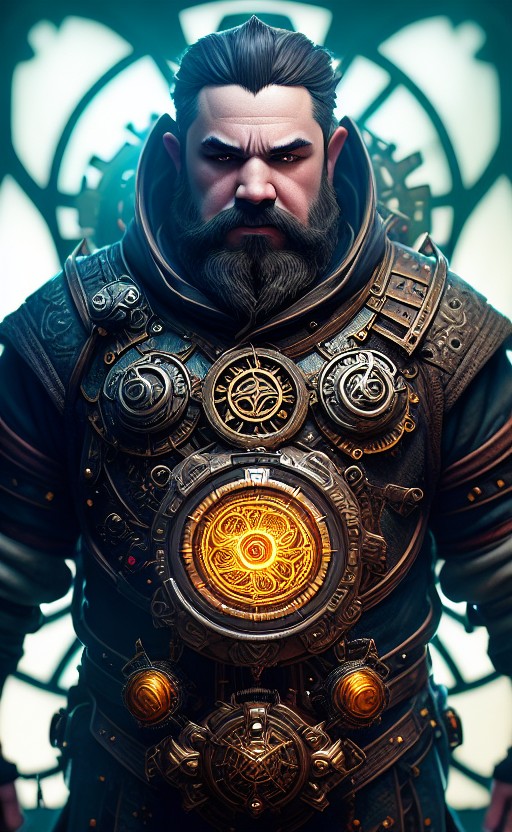
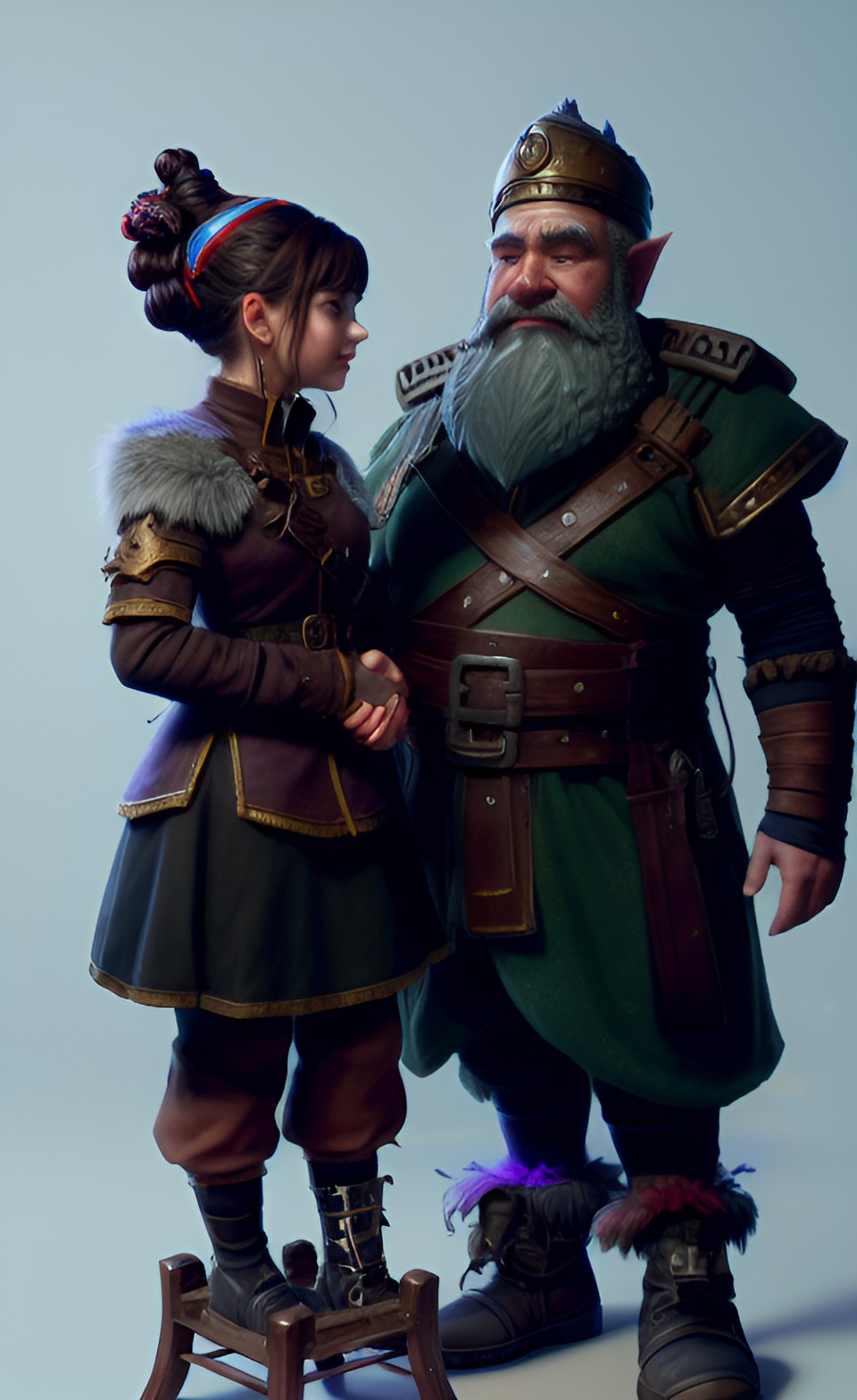
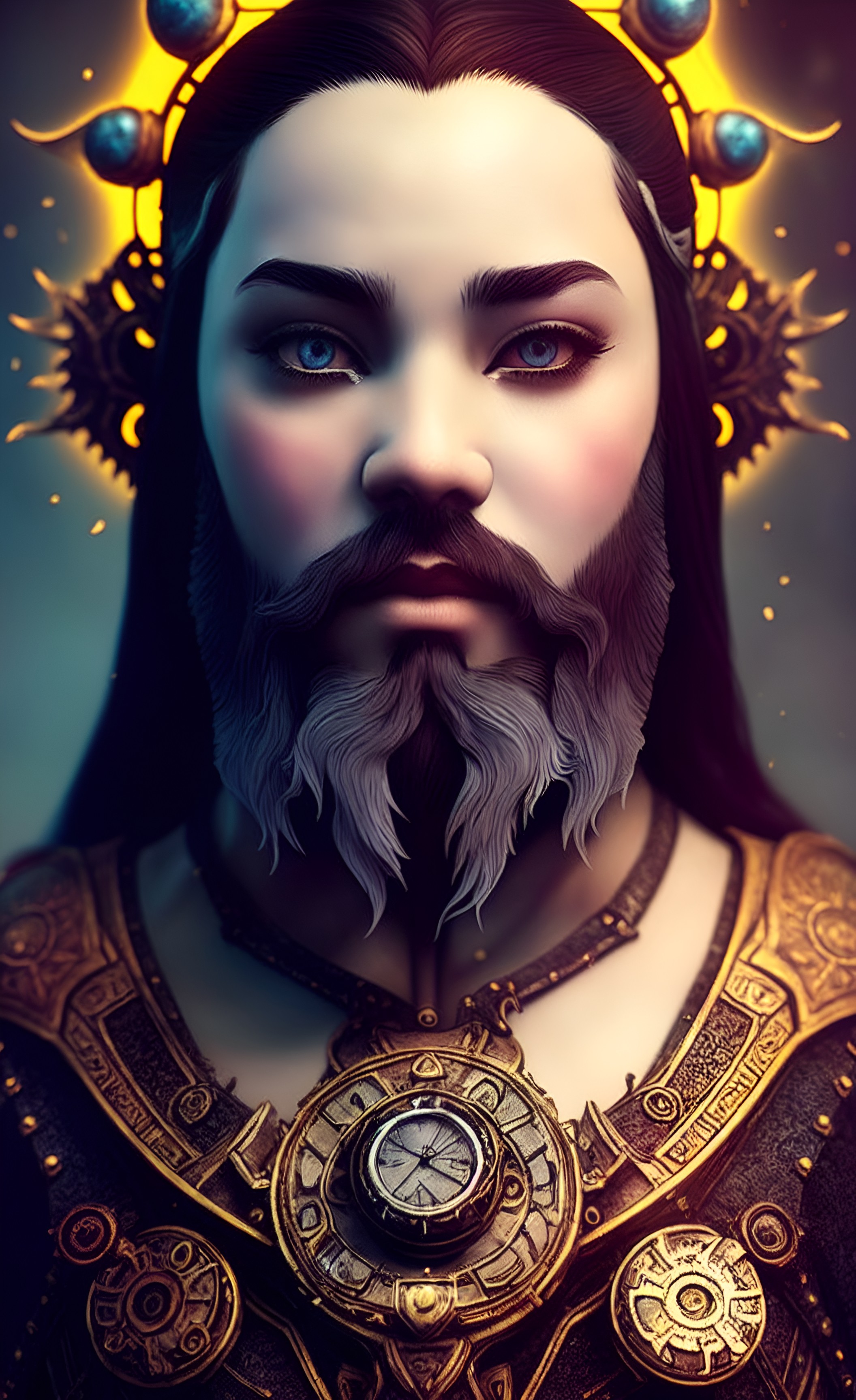










An incredibly impressive article, beautifully constructed. The formatting on display is something everyone can learn from. Really awesome :)
Creator of Araea, Megacorpolis, and many others.
Thank you!! This has been so fun to work on, I can't wait to update the rest of this world to match this level of formatting. I have my work cut out for me xD